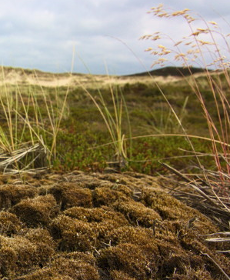 Campylopus introflexus. Photo: M. Ewald |
Impacts of invasive plant species on ecosystem functioning are well documented through observations and experiments. These impacts include alteration of plant communities, nutrient cycling and carbon storage. However observed effects are often context-dependent and thus difficult to generalize. Furthermore previous studies lack to detect invasion impact at the ecosystem scale. Within the project DIARS we focus on assessing the impact of invasive plant species on ecosystem functioning in a spatially explicit way. For this purpose we use a combination of airborne hyperspectral imaging and LiDAR (Light Detection And Ranging) to map ecosystem properties. Distribution maps of invasive plant species are then used to detect possible effects on these properties. Our work aims at better understanding how invasive plant species affect ecosystem properties and functioning. More specific we aim at:
Ecosytem properties under study are vegetation structure, aboveground carbon density, leaf nutrient contents, as well as composition and functional traits of plant communities. The selected study species are two well established invasive plant species in Central Europe, namely Campylopus introflexus (Heath star moss) and Prunus serotina (Black cherry).
|
Detection of invasive plant species and assessment of their impact on ecosystem properties through remote sensing (DIARS)
| Ansprechpartner: | Michael Ewald, Sebastian Schmidtlein | ||
|---|---|---|---|
| Förderung: | DFG / EU (FP7 BiodivERsA) | ||
| Partner: | KU Leuven (Belgium), U Picardie (France), Fondatione Edmund Mach (Italy) and Carnegie Institution for Science (USA), Friedrich-Alexander-Universität Erlangen-Nürnberg, VITO - Flemish Institute for Technological Research (Belgium) | ||
| Starttermin: | 2014 | ||
| Endtermin: | 2017 | ||






